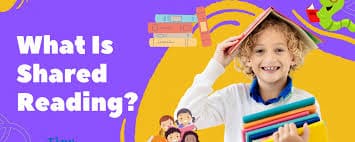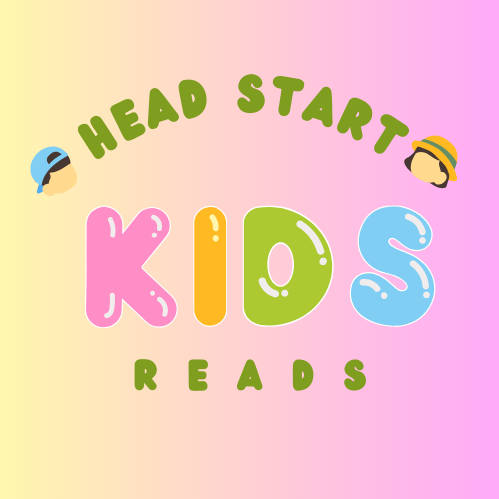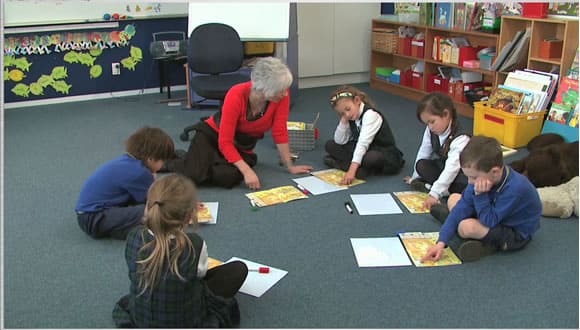The Power of Shared Reading: Nurturing Bonds and Building Literacy Skills
Introduction:
In the tapestry of childhood memories, shared reading often emerges as a vibrant thread, weaving together moments of joy, learning, and connection. Shared reading is more than a simple activity; it is a powerful tool that fosters familial bonds, enhances language development, and lays the foundation for a lifelong love of literature. In this exploration, we delve into the art and significance of shared reading, exploring the various dimensions of this enriching practice. As we navigate this literary journey, we also shine a spotlight on the transformative Reading Head Start Program, crafted by the visionary Sarah Shepard, which aligns seamlessly with the ethos of shared reading.
I. Defining Shared Reading
- A Collaborative Literary Experience: Shared reading is a collaborative literary experience where an individual, often an adult or older sibling, reads aloud to a group or a child. It transcends the boundaries of solitary reading, transforming literature into a shared adventure that invites active participation and engagement.
- Building Bonds Through Stories: At its core, shared reading is about building emotional connections through stories. Whether it’s a parent reading to a child before bedtime or a teacher engaging a classroom in a shared storytime, the act of reading together creates bonds that extend beyond the pages of a book.
- Interactive Dialogue and Discussion: Unlike solitary reading, shared reading involves interactive dialogue and discussion. It encourages listeners to ask questions, share their thoughts, and actively participate in the unfolding narrative. This dynamic exchange fosters a deeper understanding of the story and enhances critical thinking skills.

Read Also
Reading Head Start Review | Comprehensive Review 2024
II. The Benefits of Shared Reading
- Language Development: Shared reading plays a pivotal role in language development. The exposure to rich vocabulary, varied sentence structures, and new concepts during shared reading sessions contributes to the expansion of a child’s language skills. The interactive nature of shared reading also encourages active participation in conversations.
- Cognitive Development: The cognitive benefits of shared reading are manifold. It stimulates the imagination, enhances concentration and attention span, and fosters the development of cognitive skills such as memory and sequencing. The discussions that arise during shared reading sessions contribute to the development of analytical thinking.
- Social and Emotional Growth: Shared reading is a nurturing space for social and emotional growth. It provides an opportunity for children to explore a range of emotions through characters and situations in stories. The shared experience of discussing these emotions with a trusted adult or peer promotes empathy and emotional intelligence.
III. Shared Reading in Different Settings
- Family Shared Reading Rituals: Within the family setting, shared reading rituals create a sense of warmth and togetherness. Whether it’s the nightly ritual of reading a bedtime story or a weekend family book club, these shared moments contribute to a positive family culture centered around literature.
- Shared Reading in Educational Settings: In educational settings, shared reading takes on a communal dimension. Teachers often incorporate shared reading activities into the curriculum, fostering a love for books and language development within the classroom community. This shared experience promotes a sense of inclusivity and shared knowledge.
- Community Shared Reading Events: Beyond the family and educational contexts, community shared reading events bring people together through a shared love for literature. Book clubs, library story hours, and literary festivals are examples of community-based shared reading initiatives that contribute to a vibrant literary culture.

IV. Strategies for Effective Shared Reading
- Selecting Appropriate Reading Material: The choice of reading material is crucial for a successful shared reading experience. Select books that align with the interests and age-appropriate level of the participants. Consider diverse genres, themes, and formats to cater to different preferences.
- Engaging with the Text: Bring the story to life through expressive and engaging reading. Use different voices for characters, vary tone and pitch, and incorporate dramatic pauses. This interactive approach captures the listeners’ attention and enhances their comprehension and enjoyment of the story.
- Encouraging Active Participation: Create an environment that encourages active participation. Encourage listeners to ask questions, express their thoughts, and make predictions about the story. This not only enhances comprehension but also fosters a sense of ownership and engagement.
- Incorporating Multisensory Elements: Enhance the shared reading experience by incorporating multisensory elements. Use props, visuals, or tactile materials that complement the story. For example, bring in relevant objects for a show-and-tell session or use art activities related to the story.
V. Shared Reading as a Gateway to Literacy with Reading Head Start
- The Vision of Reading Head Start: Reading Head Start, founded by Sarah Shepard, shares a profound commitment to fostering literacy skills from an early age. With a vision rooted in the belief that early literacy is the cornerstone of a lifelong love for learning, the program aligns seamlessly with the principles of shared reading.
- Interactive Learning Techniques: Reading Head Start employs interactive learning techniques that resonate with the essence of shared reading. The program incorporates a combination of visual, auditory, and kinesthetic elements, ensuring a holistic approach to literacy development.
- Parental Involvement and Support: Recognizing the pivotal role of parents in a child’s literacy journey, Reading Head Start actively involves parents in the learning process. The program provides resources, guidance, and interactive activities that facilitate shared reading experiences at home, strengthening the parent-child bond.
- Cultivating a Lifelong Love for Learning: Rooted in the belief that early literacy is the foundation for a lifelong love for learning, Reading Head Start sets the stage for a positive attitude towards education and inquiry. The program’s multifaceted approach not only builds essential literacy skills but also nurtures a curiosity-driven mindset.
VI. Conclusion: The Enduring Magic of Shared Reading
In the tapestry of childhood, the threads of shared reading create enduring patterns of connection, learning, and joy. As we celebrate the collaborative spirit of shared reading, we also acknowledge the transformative impact of programs like Reading Head Start, championed by Sarah Shepard. Whether within the intimate setting of a family, the communal embrace of an educational environment, or the broader canvas of community initiatives, shared reading remains a timeless practice that enriches lives and cultivates a lifelong love for literature. May the pages turned together become a testament to the enduring magic of shared reading, weaving memories that last a lifetime.


One thought on “What are the benefits and strategies of shared reading?”